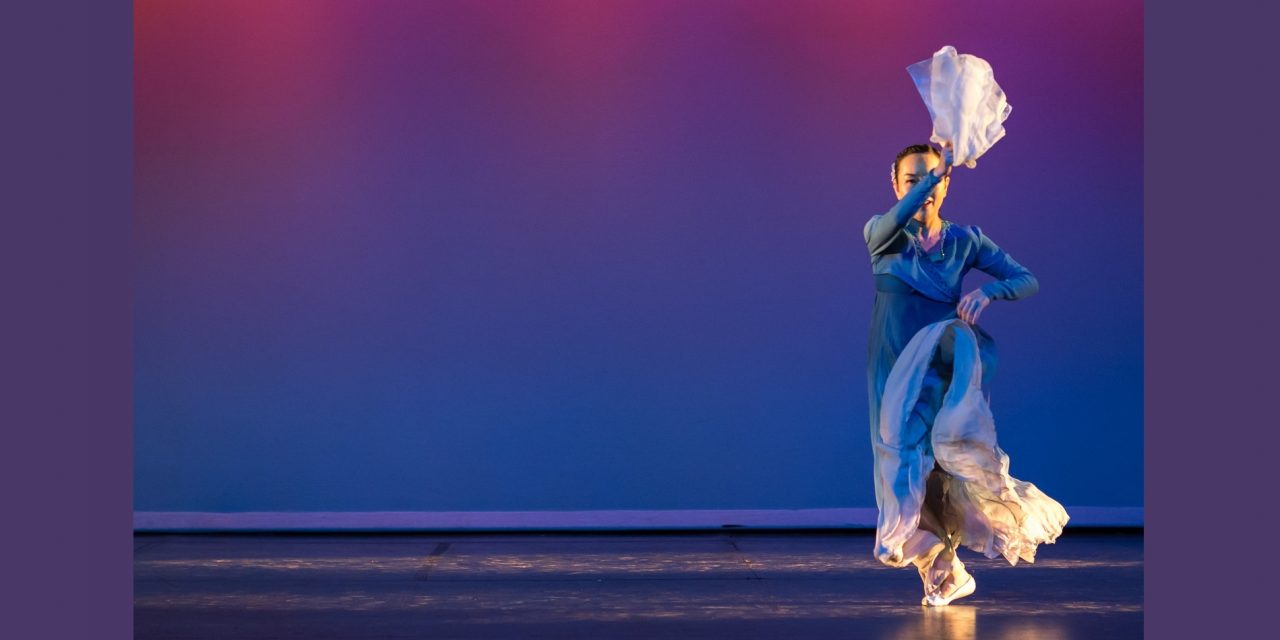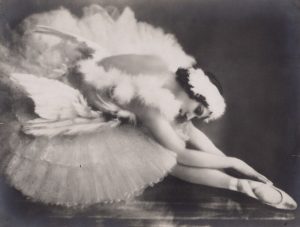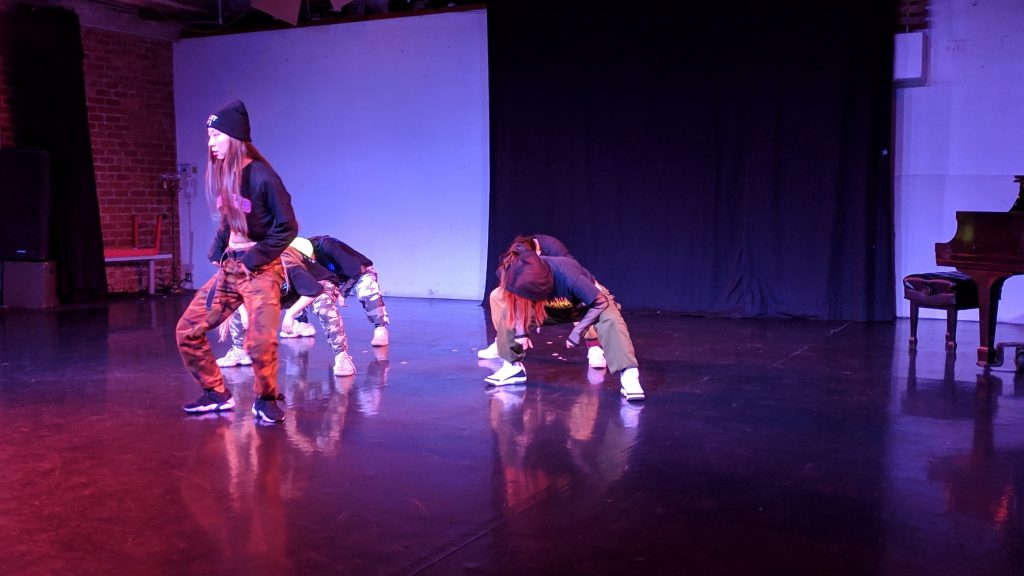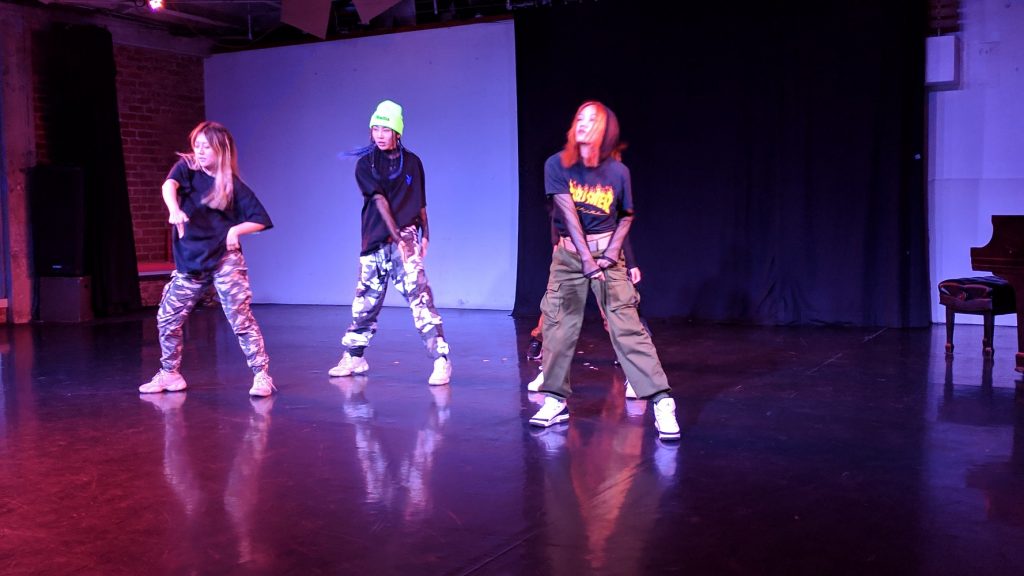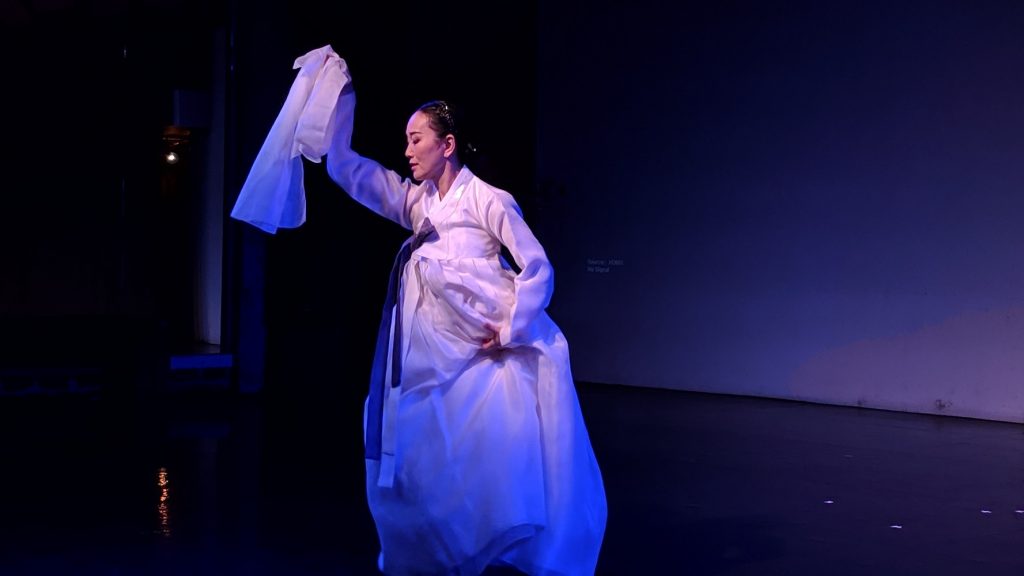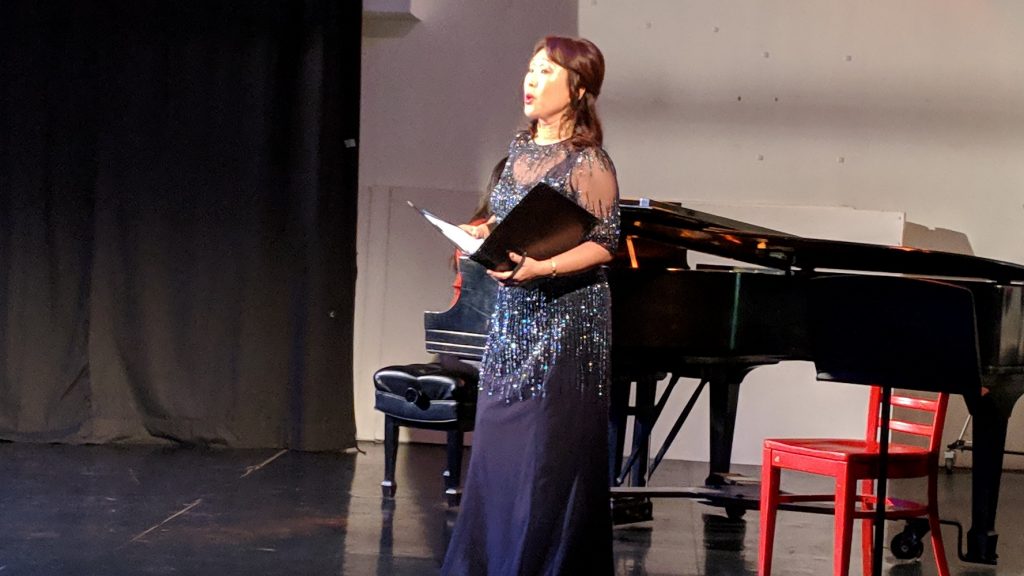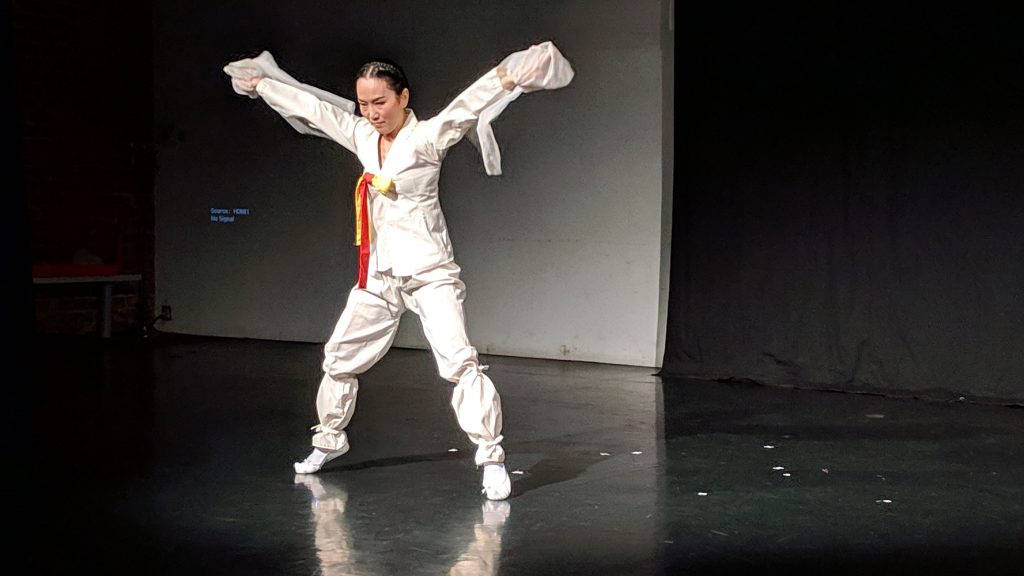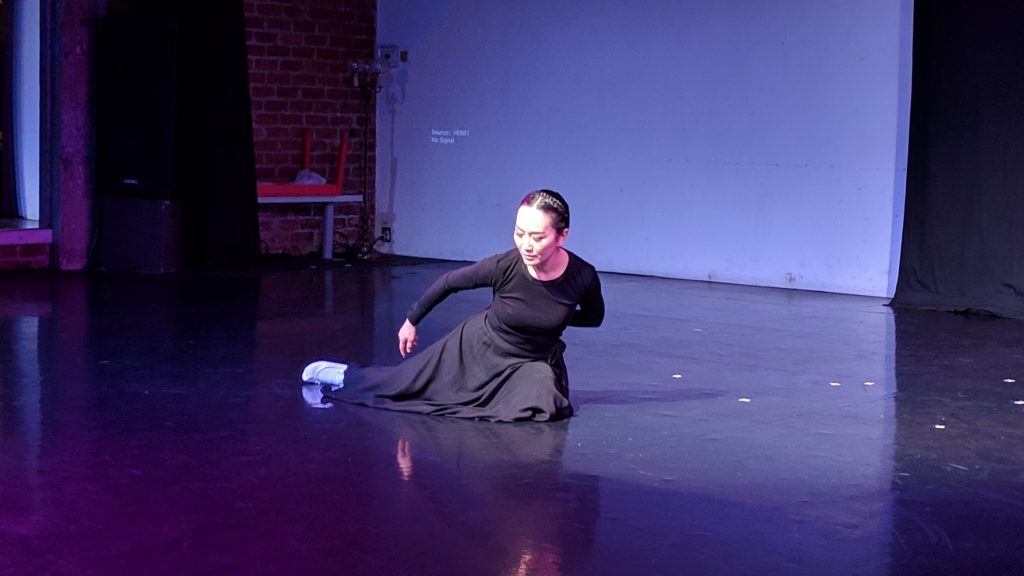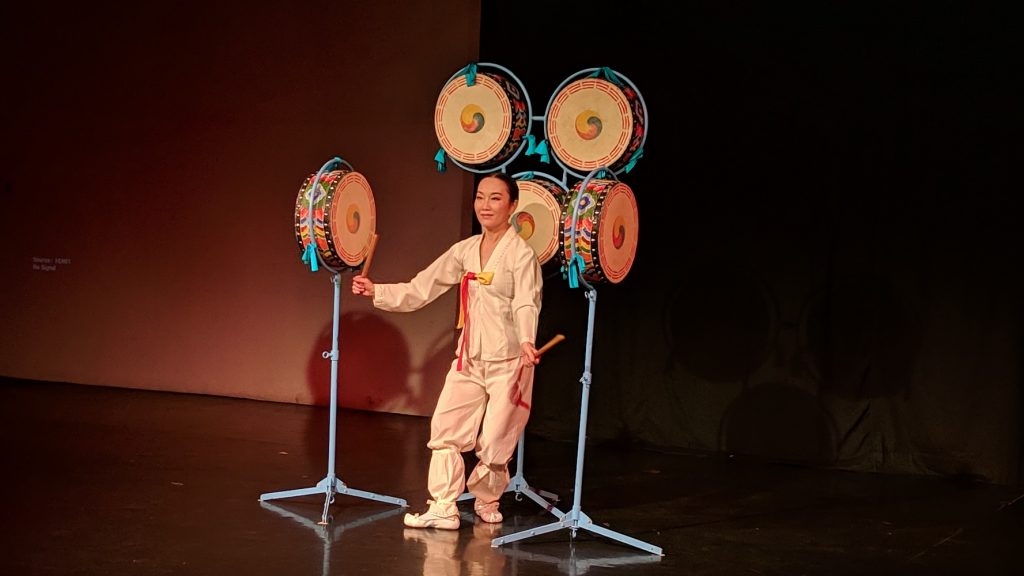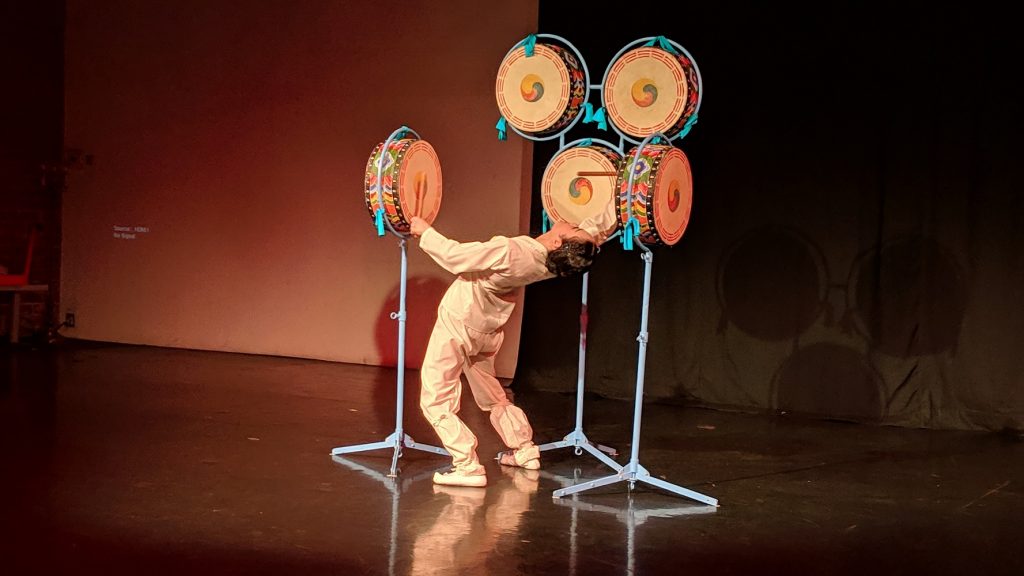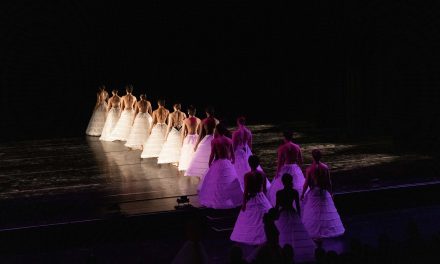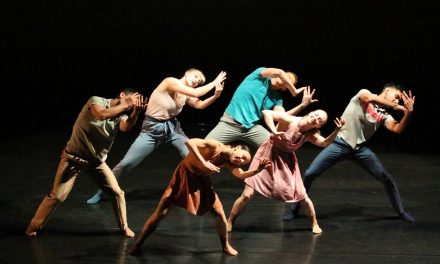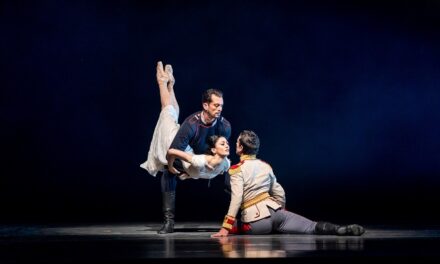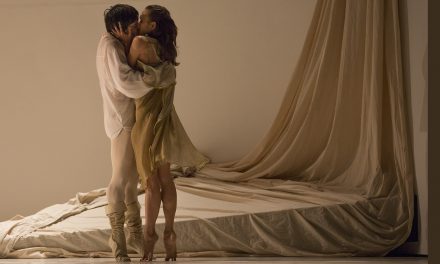Juli Kim is a lovely performer who I have seen perform several times on dance festivals or in shared concerts. Her performance at Mimoda Studio on Saturday, January 19, 2019 was a beautiful showcase for her many talents. Titled The Road, it was indeed a journey through the many layers of Kim’s sensibilities and her acute attention to details. From her costumes, to the execution of her movements, as well as the subtle tilt of her head, Kim’s execution of tradition Korean dance and her own choreography was exquisite. This same devotion to detail carried over into the production elements of the concert.
The Road was compilation of dance, music, film and contrasts of cultures that ranged from the traditional to the contemporary. The program opened with an energetic group of young women called 626 G-Squad, who danced to Unlock the Swag by Rae Sremmurd. Their performance of this Hip-Hop dance was only hindered by their lack of self-confidence. Hopefully, experience will encourage them to look at their audience and to be proud of their talents.
In contrast, Salpuri was a traditional Korean dance performed by Kim dressed in a five layered white traditional costume with a wide pearl grey ribbon pinned to her chest. At times Kim seemed to float across the stage with subtle but poignant shoulder, head, eyes, forehead and scarf accents that drew attention to the internal repressed emotions hidden by the calm external facade. It was a dance of expression and freedom originated from within.
Shin Arirang was a melodic song composed by Dong Jin Kim and performed by the lovely soprano Sunjoo Yeo. She was accompanied on the piano by the talented Connie Kim-Sheng. According to my research, Arirang is perhaps the most famous of Korean folk songs. It is so well-known that it is often referred to as Korea’s unofficial national anthem. No one seems, however, to know exactly when the song was written or what the title means. “Shin” means new, so this was a new and original work.
Kim’s next solo was titled Salpuri Adagio performed to Adagio by Norwegian composer and co-founder of the group Secret Garden, Rolf Løvland. The music was performed onstage by Connie Kim-Sheng (piano), Ben Fried (cello) and soprano Sunjoo Yeo. It was a fiery solo with quick, gliding movements and effortless turns that represented good vs evil.. Kim again made use of a white scarf, one of the trademarks of Korean dance.
Kim’s Dying Swan had appeared on a previous concert costumed in all white in keeping with the world-famous ballet solo by the same name. The original solo, choreography was by Mikhail Fokine (1905) to Camille Saint-Saens’s Le Cygne, was performed over four thousand times by the renown ballerina Anna Pavlova. Kim did not copy Fokine’s choreography but made it beautifully her own and original. For this performance she was costumed in a black dress with white pants showing discretely from underneath. The costume was the same as what she wore in Salpuri Adagio, but it still worked well. Kim allowed us to see and felt the swan’s remorse at losing the joys of flight, and her acceptance that the end of her life had arrived.
This was followed by Dance With Bells, a solo with a completely opposite theme and quality. The dance had a subtle Spanish flair, with references to what resembled Russian folk dance. Kim flirted with her eyes as she expertly opened, closed and twirled a beautiful multicolored fan. The dance was wonderfully ended with a snap to her fan and a proud lunge to one knee.
New Leaf is a expressive film directed by Julia Armine and dedicated to all young girls who have experienced the loss of a parent. We first saw the face of a beautiful young woman standing outside next to a tree. The scene then shifted to Juli Kim dressed in white, her shoulder length hair flowing around her face as she moved across the rooftop of a building overlooking Los Angeles. Another shift took us into a room draped with varying white materials as Connie Kim-Sheng performed on a white piano next to Ben Fried, seated on a platform covered in white, played the cello. The camera moved back and forth through the three scenes, giving us the sense that Kim’s character was the spirit of the girls mother watching from above as her daughter matured.
Kim next performed her work titled The Journey. Although she performed this dance with her usual eloquent precision and it was pleasing to watch, the dance was far too short to portray any sense of travel from one destination to another, or through life’s struggles.
Her final dance for the evening woke everyone back up from a momentary lull. I knew of Kim’s dancing, but I had no idea that she was such a good percussionist. With five medium sized drums mounted on three blue medal stands, Kim performed Five Drum Dance with rhythmic accuracy and physical agility. She turned, posed, and executed hinges and back bends as her drum sticks flew over and around the ornately colored drums. It was a fun and surprising finish to a very notable evening.
To access Juli Kim’s Facebook page, click here.
For information on Mimoda Studio, click here.
Featured image: Juli Kim – Photo by Victor Vic

